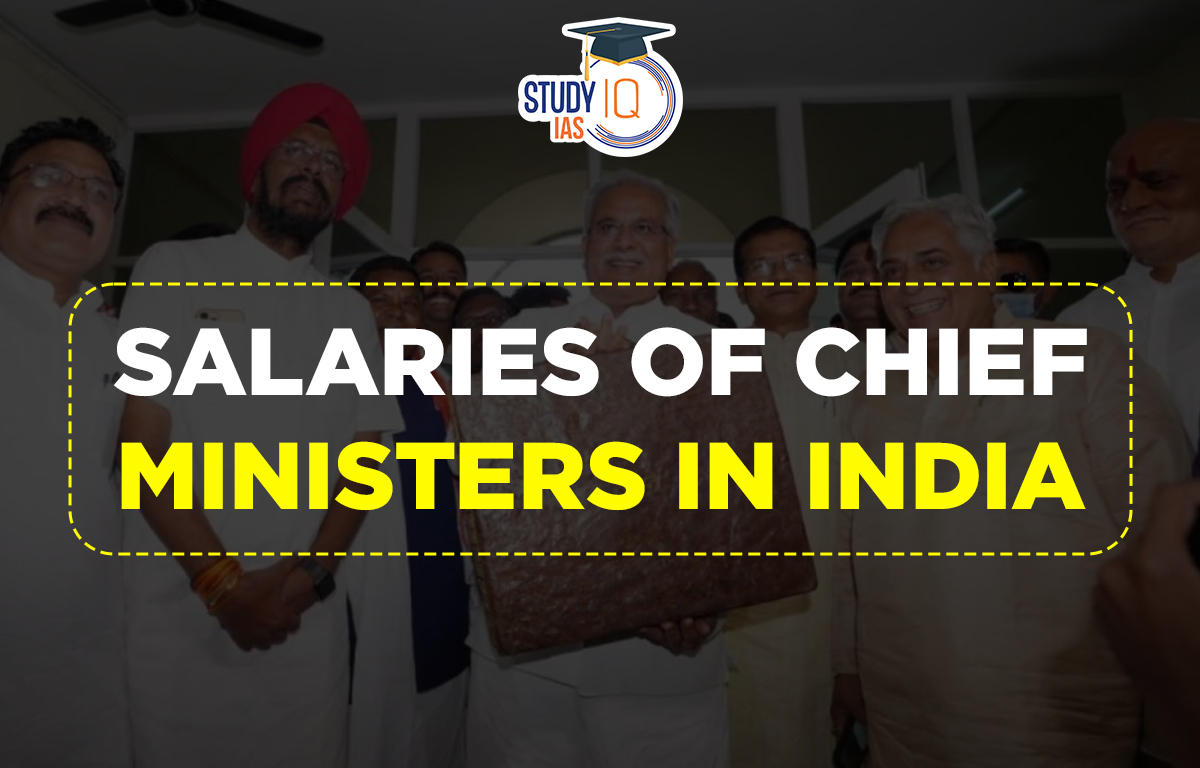Table of Contents
Salaries of Chief Ministers in India
Salaries of Chief Ministers in India: The salaries of Chief Ministers, who are among India’s elite and make more money than the President of India, are explained in this article. The chief minister is one of the main recipients of the heedless generosity that follows an elected government. Their Salaries of Chief Ministers increase dramatically at the federal or state level. Chief Ministers are paid differently in each state. When compared to other chief ministers from other states, Telangana receives the highest pay.
Salaries of Chief Ministers in India Overview
In any state, the Chief Minister is the most powerful politician. The Chief Minister is elected to lead a state government and is in charge of all departments. The Chief Minister serves on the Union Cabinet and is usually the most senior minister in a state cabinet.
Since time immemorial, the position of Chief Minister has been crucial in India. Members of dynastic states who later rose to become monarchs were frequently in that position. The purpose of this article is to deconstruct the pay structure of such Chief Ministers.
Salaries of Chief Ministers have been a source of contention in India, particularly at the state level. Because the position of Chief Minister is so important in a state, they can afford to demand a high salary. The Chief Minister is elected to lead a state government and is in charge of all departments. The Chief Minister serves on the Union Cabinet and is usually the most senior minister in a state cabinet.
Salaries of Chief Ministers in India State Wise
Salary of various Chief Ministers in various states (comprising salary as a CM of a state as well as salary received as an MLA/MLC respectively).
| S.N. | State | Salary (per month in Rupees) |
| 1. | Telangana | ₹410,000 (US$5,900) |
| 2. | Delhi | ₹390,000 (US$5,600) |
| 3. | Uttar Pradesh | ₹365,000 (US$5,300) |
| 4. | Maharashtra | ₹340,000 (US$4,900) |
| 5. | Andhra Pradesh | ₹335,000 (US$4,800) |
| 6. | Gujarat | ₹321,000 (US$4,600) |
| 7. | Himachal Pradesh | ₹310,000 (US$4,500) |
| 8. | Haryana | ₹288,000 (US$4,200) |
| 9. | Jharkhand | ₹272,000 (US$3,900) |
| 10. | Madhya Pradesh | ₹255,000 (US$3,700) |
| 11. | Chhattisgarh | ₹230,000 (US$3,300) |
| 12. | Punjab | ₹230,000 (US$3,300) |
| 13. | Goa | ₹220,000 (US$3,200) |
| 14. | Bihar | ₹215,000 (US$3,100) |
| 15. | West Bengal | ₹210,000 (US$3,000) |
| 16. | Tamil Nadu | ₹205,000 (US$3,000) |
| 17. | Karnataka | ₹200,000 (US$2,900) |
| 18. | Sikkim | ₹190,000 (US$2,700) |
| 19. | Kerala | ₹185,000 (US$2,700) |
| 20. | Rajasthan | ₹175,000 (US$2,500) |
| 21. | Uttarakhand | ₹175,000 (US$2,500) |
| 22. | Odisha | ₹160,000 (US$2,300) |
| 23. | Meghalaya | ₹150,000 (US$2,200) |
| 24. | Arunachal Pradesh | ₹133,000 (US$1,900) |
| 25. | Assam | ₹125,000 (US$1,800) |
| 26. | Manipur | ₹120,000 (US$1,700) |
| 27. | Nagaland | ₹110,000 (US$1,600) |
| 28. | Tripura | ₹105,500 (US$1,500) |
According to the above table, rich Indian states pay handsome salaries to their Chief Ministers, whereas poor states, such as all North East states, pay lower salaries to their Chief Ministers. It is surprising that only three states, Telangana, Delhi, and Uttar Pradesh, pay higher salaries than state governors.
Salary of Chief Ministers of different States in India
The Indian Constitution states that the Governor appoints the Chief Minister in Article 164. Our country currently has 28 states and 8 Union Territories (UTs). The Chief Minister (CM) of each state is paid a monthly salary for their services. We have published information about the salaries of all CMs in our country in this article.
Chief Ministers Salary in India
When calculating the salaries of Chief Ministers and other ministers from union government secretaries, the following factors are taken into account:
- The minister is paid a salary by the state government from which he or she is appointed.
- Each state has a different pay scale for ministers, so the salary structure is unique.
- The pay scale of ministers varies by the state due to differences in seniority and competence of ministers in different states, differences in cabinet composition, and so on.
Other considerations include ministers’ workload and responsibilities, as well as the officers’ current pay scale in states.





















 WhatsApp
WhatsApp